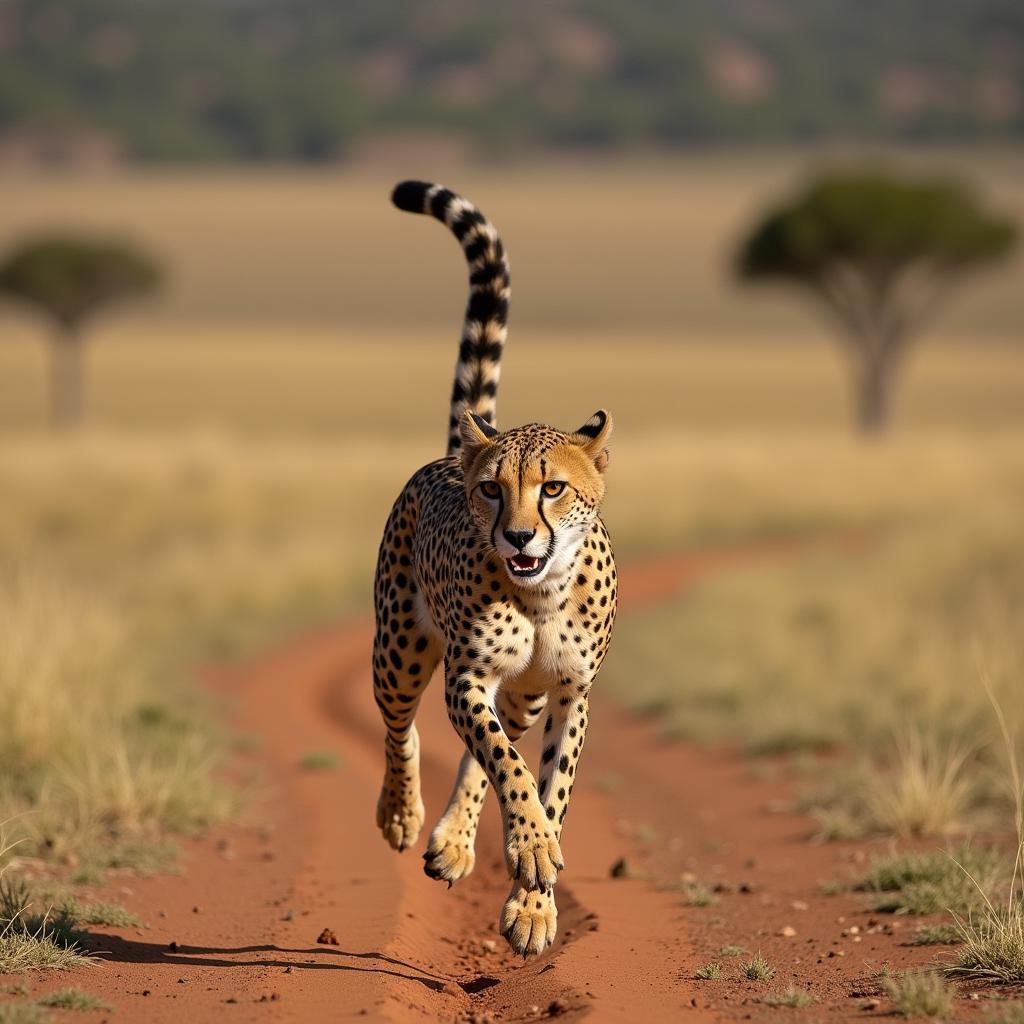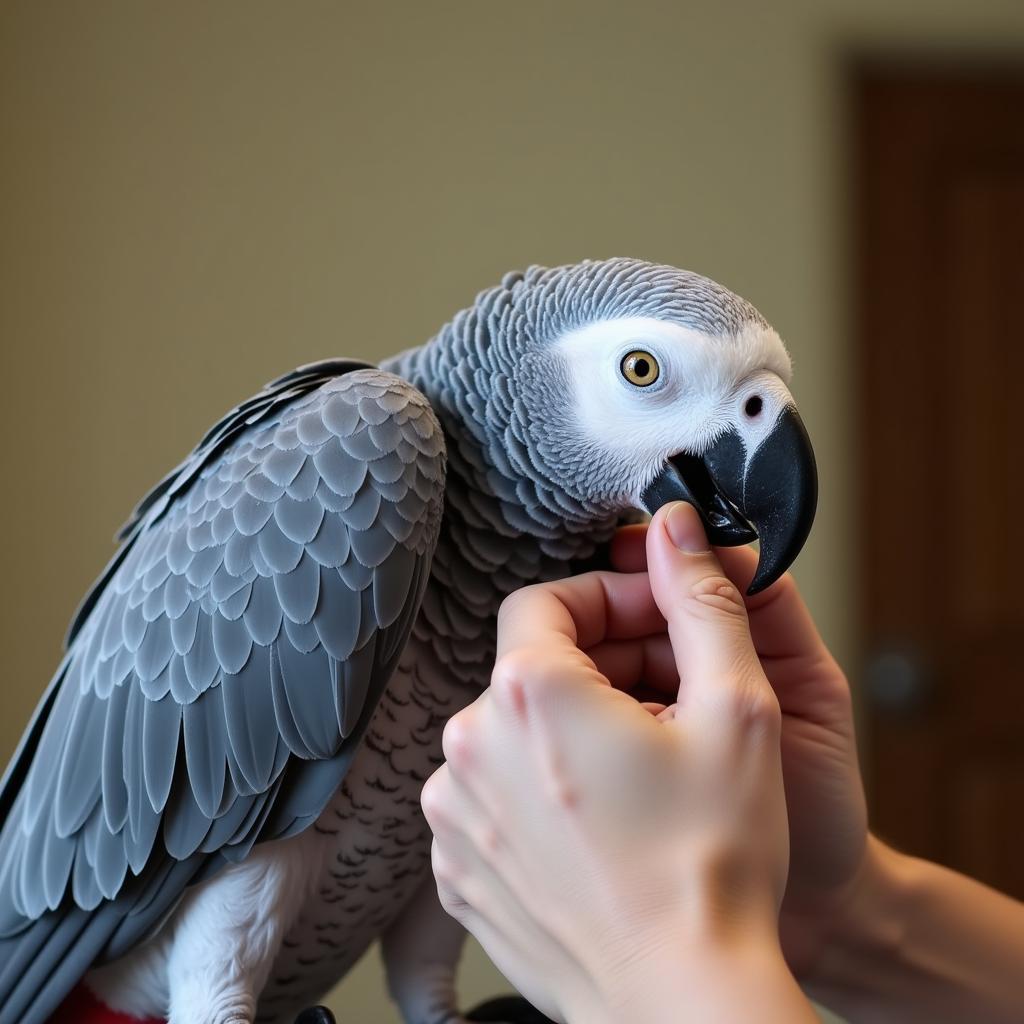African Cheetah Scientific Name: Acinonyx jubatus
The African cheetah, scientifically known as Acinonyx jubatus, is the fastest land animal on Earth. But there’s much more to this iconic creature than just speed. This article delves into the fascinating world of the cheetah, exploring its scientific classification, unique adaptations, and the challenges it faces in the wild. african cats fastcat 445
Unraveling Acinonyx jubatus: What’s in a Name?
The scientific name Acinonyx jubatus provides valuable insights into the cheetah’s evolutionary history and characteristics. Acinonyx comes from the Greek words “akines” meaning “motionless” and “onyx” meaning “claw,” referring to the cheetah’s semi-retractable claws. Jubatus, derived from Latin, means “maned,” a nod to the cheetah’s distinctive mane, particularly prominent in cubs. This scientific name distinguishes the cheetah from other feline species and helps scientists understand its unique place in the animal kingdom.
 African Cheetah (Acinonyx jubatus) in full sprint
African Cheetah (Acinonyx jubatus) in full sprint
The Cheetah’s Evolutionary Journey
The cheetah’s lineage diverged from other big cats millions of years ago. Its evolutionary journey has resulted in remarkable adaptations for speed. These include a lightweight build, long legs, flexible spine, and specialized respiratory and cardiovascular systems. These adaptations allow the cheetah to reach incredible speeds of up to 70 miles per hour in short bursts, making it a formidable hunter on the African plains.
What makes a cheetah a cheetah? Identifying Characteristics
Beyond its speed, the cheetah possesses distinct physical characteristics. Its slender body, spotted coat, and tear-like markings running from the eyes to the mouth are easily recognizable. These markings likely help reduce glare from the sun, improving hunting efficiency. Furthermore, the cheetah’s relatively small head and high-set eyes provide excellent peripheral vision, crucial for spotting prey and navigating the open savanna.
The Cheetah’s Diet and Hunting Techniques
african antelope names are the cheetah’s primary prey. The cheetah hunts primarily during the day, relying on its incredible speed and agility to chase down its prey. Its semi-retractable claws provide extra grip during high-speed pursuits. While its speed is its greatest asset, the cheetah is not built for prolonged chases and often relies on the element of surprise for a successful hunt. african antelope beginning with o
Conservation Concerns: Protecting Acinonyx jubatus
The cheetah faces numerous threats in the wild, including habitat loss, human-wildlife conflict, and competition with other predators. african cheetah names, their population decline highlights the urgency of conservation efforts. Organizations and researchers are working tirelessly to protect the cheetah and its habitat, ensuring that future generations can witness the breathtaking speed and grace of Acinonyx jubatus.
Conclusion: The Future of Acinonyx jubatus
The African cheetah, Acinonyx jubatus, is a remarkable creature whose speed and grace have captivated humans for centuries. Understanding its scientific name, adaptations, and the challenges it faces is crucial for ensuring its survival. By supporting conservation efforts and spreading awareness, we can contribute to a future where the cheetah continues to thrive in its natural habitat.
FAQ
- What is the top speed of a cheetah?
- What is the lifespan of a cheetah in the wild?
- What are the main threats to cheetahs?
- How many cheetahs are left in the wild?
- What is being done to protect cheetahs?
- How can I support cheetah conservation efforts?
- What are some interesting facts about cheetahs?
Common Scenarios and Questions
-
Scenario: You see a cheetah in a documentary and wonder about its scientific name.
-
Question: What is the scientific name for a cheetah?
-
Answer: The scientific name for a cheetah is Acinonyx jubatus.
-
Scenario: You are researching the fastest land animals and want to learn more about the cheetah’s adaptations.
-
Question: What makes the cheetah so fast?
-
Answer: The cheetah’s speed is due to a combination of factors, including its lightweight build, long legs, flexible spine, and specialized respiratory and cardiovascular systems.
Further Exploration
For more information on African wildlife, check out our articles on african groundhog.
Call to Action
For any inquiries or support regarding African wildlife conservation, please contact us:
Phone: +255768904061
Email: kaka.mag@gmail.com
Address: Mbarali DC Mawindi, Kangaga, Tanzania.
Our customer service team is available 24/7.




